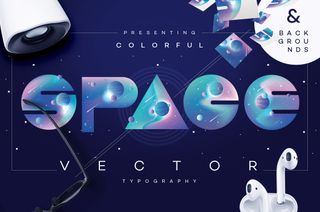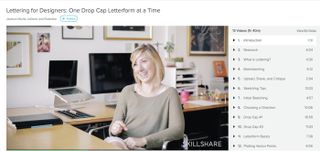5 ways to earn more as a freelancer
Boss your brand: make 2018 your most lucrative year ever.
As a freelancer, there are many different ways to generate some extra cash – other than just winning more work, that is. In fact, depending on the amount of time (and sometimes capital) you can afford to invest, you could even find a valuable income stream to tide you over in quieter periods.
Selling things is one method. These could be physical items that require some upfront investment, such as prints, or digital assets that just require your time and effort. Or if you've built a name for yourself and people want to learn from your experience, perhaps teaching could be an option.
With a little imagination and a few negotiation skills, your existing client projects might become more lucrative than you were expecting, too. Knowing your own worth goes a long way, so long as you can convince others of it too.
So if you'd like to boost your cashflow this year – and frankly, who wouldn't – read on to discover five effective ways to earn more as freelancer. Be sure to also see our tips for staying sane as a freelancer and our guide to tools that make freelancing easier. And if you're looking for ideas for a sideline, see our tips for better side projects.
01. Increase your day rate

The simplest method of all is just to earn more for what you're already doing. That may be easier said than done, but it all starts with being confident in your value to a project and communicating that eloquently and persuasively.
The ability to negotiate fees is a vital part of the design process. Don't be afraid to increase them, so long as you're professional about it. If it's an existing client who's used to your old rate, have a frank conversation at the start of a new project – don't announce halfway through, when the budget is set, that your rates are changing.
Setting your rates in the first place is one of the biggest challenges for freelancers, and even the most seasoned creatives struggle to monetise their skills perfectly. Bill too high and you'll earn a reputation for being costly; pitch too low and you'll struggle to turn a profit.
As well as upping your fee, you could also try a different method for calculating it. There are four key methods: a day rate (or hourly rate); a flat fee; a formula; or a more ad-hoc approach. Charging by the hour might seem straightforward, but it can mask the true cost of your work and not take other factors into account – like usage fees. Crunch some numbers; ask your peers; find out what works for you.
02. Sell digital assets

When it comes to bringing in some extra cash by selling your wares, the quickest and most cost-effective way of doing so is with digital assets – via the big stock libraries, or more niche online marketplaces such as Creative Market.
With fairly minimal effort, it could be a way to let personal photographs, vector illustration experiments or rushes from video shoots that are sitting on a hard drive somewhere see the light of day – and potentially sell some of them too. Put some more effort into it, with some research into key trends and popular downloads, and you could make some proper cash.
Versatile collections of digital assets for fellow designers to use in their own projects can also prove lucrative if you pitch them right, such as icon packs, background images, patterns, textures or brushes. If you’re good at it, it could even become a job in its own right.
03. Up-sell your services

Pitching for work, particularly from new clients who have never worked with you, takes time and effort – none of which is billable. Sometimes, however, there are aspects of a job that an existing client might not have thought of commissioning you to do – or ways to expand and enhance a project in new ways.
It's all about up-selling: but not in a second-hand car salesman way. No client wants to be treated like a cash cow or have expensive bolt-ons thrown at them constantly – you're not selling them a cable TV package either. Treat them like a collaborator, however, and contribute ideas to take a project to the next level and they should value your enthusiasm. Hopefully they’ll be prepared to pay for it too.
This could be as simple as making them aware of skills they didn't originally hire you for: perhaps you're a designer with illustration skills on the side, or have coding experience, or are a dab hand at copy editing. Or it could be more about the scale and ambition of the project itself – killer ideas that lead to more work for you, but benefit everyone. Think creatively: you never know where it could take you.
04. Produce physical products

While it takes an upfront investment to move into producing and selling physical products, an online store on your website definitely has the potential to yield some extra cash on the side. Treat it as part of your existing self-promotional spend anyway, and you don't really have anything to lose.
Prints, postcards, stickers and notebooks are all within easy and affordable reach if you use a quality digital print and design company like moo.com. If you're an illustrator or image-maker, it's a great way to turn your work into something tangible, collectable and, crucially, sellable without breaking the bank – and it makes the print process easier for graphic designers too.
Just be careful not to overestimate your success, if your primary goal is turning a profit by selling products online. If it's your first time, test a relatively small batch of a product first to see how it fares – you don’t want stacks of unwanted merchandise on your hands. And if you hit the sweet spot and sell out, order more!
There's some extra peace of mind if you use moo.com too: the MOO Promise effectively gives you a 100 per cent satisfaction guarantee. If there's any kind of mistake on the design – even if it's your fault – they'll fix it for free! No one wants a garage full of merchandise with an embarrassing typo on it, after all.
05. Inspire the next generation

Once you reach a certain level of proficiency and reputation, using your design skills to 'give back' is a popular pursuit. Work with schools and charities is usually altruistic, but teaching can bring in some extra cash too.
Talking on the speaker circuit may be paid – with the general rule that the duller and more corporate the event, the higher the fee; the more dynamic creative and exciting, the opposite. It can raise your profile considerably, however, and lead to other opportunities.
Alternatively, producing a course for an online platform such as Skillshare may require some investment of time upfront, but once it's produced you can sit back and enjoy the royalties. It's based on a membership model, and your revenue share depends on the popularity of your course – so if you expect to earn decent money from it, you need to be confident that there's an audience out there who are interested in what you have to say.
Fill your online shop with top-quality merchandise by heading over to digital print and design company moo.com. You’ll find a wealth of fun, affordable, easy-to-use tools for creating premium prints, postcards, stickers and more – just add your design and you’re away. There's even a 100% satisfaction guarantee with the MOO Promise: if there's any kind of mistake on the design – even if it's your fault – they'll fix it for free!
Disclaimer: This post is brought to you by MOO – an award-winning online print and design company.
Related articles:
- 10 steps to go freelance this year
- Pro's guide to creating memorable business cards
- How to project your work onto the global stage
- 6 sure-fire ways to build your creative network
- How to nail the art of networking
- 4 brilliant personal logos and why they work
- 3 tips for crafting stunning print promo material
- Create better business cards in less than five minutes

Thank you for reading 5 articles this month* Join now for unlimited access
Enjoy your first month for just £1 / $1 / €1
*Read 5 free articles per month without a subscription

Join now for unlimited access
Try first month for just £1 / $1 / €1
Get the Creative Bloq Newsletter
Daily design news, reviews, how-tos and more, as picked by the editors.

Nick has worked with world-class agencies including Wolff Olins, Taxi Studio and Vault49 on brand storytelling, tone of voice and verbal strategy for global brands such as Virgin, TikTok, and Bite Back 2030. Nick launched the Brand Impact Awards in 2013 while editor of Computer Arts, and remains chair of judges. He's written for Creative Bloq on design and branding matters since the site's launch.